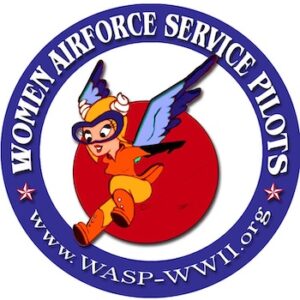
The Women Air force Service Pilots (patch)
*Black history and the Women's Air Force Service Pilots (WASP) are affirmed on this date in 1943. Also known as the Women's Army Service Pilots or Women's Auxiliary Service Pilots, the WASP was a civilian women pilots' organization whose members were United States federal civil service employees.
Although most WASP pilots were white, they were not exclusively so. Two Chinese Americans, Hazel Ying Lee and Maggie Gee, two women of Hispanic descent, Verneda Rodriguez and Frances Dias, and one known Native American woman, Ola Mildred Rexroat, completed the training. Rexroat was a member of the Oglala Sioux tribe from the Pine Ridge Indian Reservation in South Dakota.
While the total number of Black women applicants for WASP training is unknown, several African American pilots made it to the final interview stage, where they were all rejected. Mildred Hemmons Carter, a Black applicant, was asked to withdraw her application because of her race. In 1940, at age 19, Carter earned a Bachelor of Arts degree from the Tuskegee Institute. The following year, she received her aviation certification. However, because of her sex, Carter was also rejected from flying with the Tuskegee Airmen. Seventy years later, she was recognized retroactively as a WASP, and Carter took her final flight at age 90.
Another African American applicant, Janet Harmon Bragg, was told by Cochran in her interview that "it was difficult enough fighting prejudice aimed at females without additionally battling race discrimination." Members of WASP became trained pilots who tested aircraft, ferried aircraft, and trained other pilots. They aimed to free male pilots for combat roles during World War II. Despite various members of the armed forces being involved in the creation of the program, the WASP and its members had no military standing. WASP was preceded by the Women's Flying Training Detachment (WFTD) and the Women's Auxiliary Ferrying Squadron (WAFS). Both were organized separately in September 1942 before merging.
The WASP arrangement with the US Army Air Forces ended on December 20, 1944. Each member's service freed a male pilot for military combat or other duties during its operation. They flew over 60 million miles, transported every type of military aircraft, towed targets for live anti-aircraft gun practice, simulated strafing missions, and transported cargo. Thirty-eight WASP members died during these duties, and one, Gertrude Tompkins, disappeared while on a ferry mission, her fate still unknown. In 1977, the members received veteran status for their World War II service; in 2009, they received the Congressional Gold Medal.